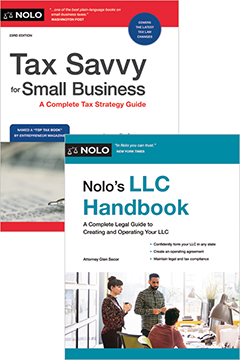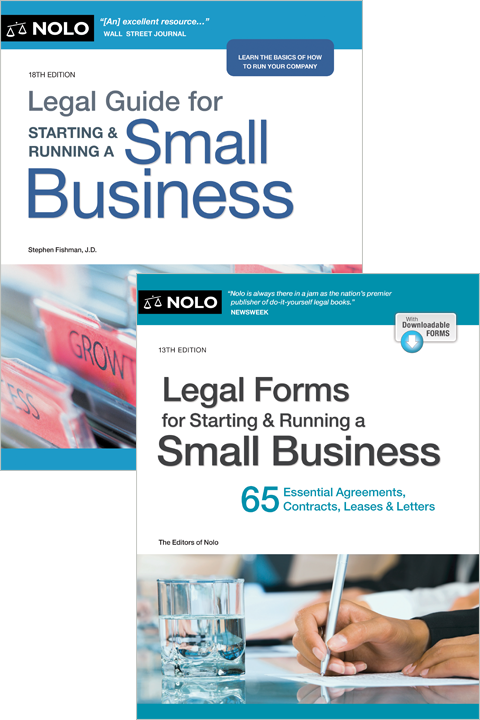Learn the rules to dissolve your corporation, including how to vote for dissolution, which forms to file, and when to notify creditors and file your final tax returns.
For some corporations, a time comes when the people who own and run things voluntarily decide to close the business. If you've reached that point with your California corporation, you'll need to take care of multiple tasks—including what's called "dissolving and winding up" your business.
While a corporation can be involuntarily dissolved through the courts, this article covers voluntary dissolution by a corporation's shareholders. Also, while there are special procedures for dissolving corporations that haven't yet issued stock, are undergoing Chapter 7 bankruptcy, or have disposed of all assets and not conducted any business for the last five years, those procedures aren't covered in this article.
Let's go through the steps to dissolve your corporation in California. Keep in mind that your corporation's articles of incorporation and bylaws might have additional requirements or procedures for your corporation to follow.
- 1. Shareholders Vote to Dissolve the Corporation
- 2. Prepare and File a Certificate of Election
- 3. Board of Directors Provides Written Notice of Corporation's Dissolution
- 4. Pay Taxes, Settle Debts, and Distribute Remaining Assets to Shareholders
- 5. File a Certificate of Dissolution With California
- 6. File Final Returns with the California Franchise Tax Board
- 7. Close Bank Accounts and Cancel Licenses, Permits, and Out-of-State Registrations
- Final Guidance on Dissolving Your California Corporation
1. Shareholders Vote to Dissolve the Corporation
A corporation in California can voluntarily dissolve if shareholders holding at least 50% of the voting power vote in favor of the dissolution. (Cal. Corp. Code § 1900 (2023).)
For example, suppose Michael, Donny, Leo, and Rafael are shareholders in Ninja Turtle Corp. Michael owns 60% of the voting shares, Donny owns 20%, Leo owns 15%, and Rafael owns 5%. Ninja Turtle Corp. can be dissolved if only Michael votes to dissolve. Even though Michael only represents one-quarter of the shareholders, his shares equal 60% of the voting power—or at least 50%.
The shareholders can either:
- vote at a shareholders' meeting, or
- provide their written consent in lieu of (without) a shareholders' meeting.
Your articles of incorporation or bylaws can require a vote greater than a vote by shareholders holding at least 50% of the voting power. For example, your bylaws can require a vote by shareholders holding at least two–thirds of the voting power to dissolve the corporation. Additionally, your corporation's organizational documents can require that the board of directors first pass a resolution to dissolve before the shareholders can vote on the dissolution.
Once the shareholders vote to dissolve the corporation, the shareholders must either:
- adopt a resolution to wind up and dissolve the corporation, or
- file a written consent of shareholders with the corporation.
(Cal. Corp. Code § 1903 (2023).)
Requirements for a Shareholders' Meeting
When the shareholders adopt a resolution to dissolve the corporation at a meeting, there are some requirements that must be followed.
Notice of the meeting. You're required to give between 10 and 60 days advance written notice to each shareholder entitled to vote on the dissolution. The notice must say the place, date, time, and purpose of the meeting. If the meeting will be virtual, the notice must provide instructions for remote communication. The notice can be given personally, by electronic means, or by first-class mail. (Cal. Corp. Code § 601 (2023).)
Who can call the special shareholders' meeting. The board, chairperson of the board, the president, shareholders holding at least 10% of the voting power, or anyone allowed by the articles of incorporation or bylaws can call a special meeting for the corporation. (Cal. Corp. Code § 600 (2023).)
Where meetings can be held. Meetings can be held in person or by electronic means, such as by video or conference call. Your bylaws can set the location of meetings. (Cal. Corp. Code § 600 (2023).)
Written Consent In Lieu of a Shareholders' Meeting
If the shareholders choose to give their written consent for dissolution instead of holding a vote at a meeting, then there's no need to provide notice of such an action. To dissolve a corporation, California's default rules call for written consent by shareholders holding at least 50% of the voting power—the same minimum requirement if there was a vote at a meeting. However, the corporation's articles can require a higher voting percentage. (Cal. Corp. Code § 603 (2023).)
If written consent isn't given by all shareholders, then before the dissolution can take effect, you'll need to provide notice to the non-consenting shareholders of the shareholders' approval of the dissolution.
2. Prepare and File a Certificate of Election
California has an unusual requirement in its dissolution laws. Whenever a corporation has elected to wind up and dissolve, the corporation must file a certificate of election as evidence of the dissolution. The certificate of election can be filed either before or together with the certificate of dissolution.
The certificate of election says:
- that the corporation has elected to wind up and dissolve, and
- if there was a vote to dissolve, that the required number of votes was taken (at least 50% of the voting power).
The certificate can be signed either by:
- an officer
- at least a majority of the directors currently in office, or
- a shareholder who's been authorized by shareholders holding shares representing 50% or more of the voting power.
If the certificate is signed by a shareholder, then the certificate will contain a statement that says the shareholder is authorized to sign the certificate.
If all shareholders voted to dissolve the corporation, then you don't need to file a certificate of election.
(Cal. Corp. Code § 1901 (2023).)
3. Board of Directors Provides Written Notice of Corporation's Dissolution
As soon as the shareholders have approved the dissolution, the board of directors must notify all shareholders by mail that the voluntary winding-up process has begun. In addition to notifying shareholders about the dissolution, the board must also provide mailed written notice to all known creditors and claimants whom the corporation has addresses for. (Cal. Corp. Code § 1901 (2023).)
Unlike other states, California doesn't provide any instruction on how or within what time frame creditors should receive notice. California law also doesn't say what information the notice must include or whether providing notice bars creditors' claims.
While there are no specific notice requirements, you should let creditors know that if they have a claim against your corporation, they should provide you with information about that claim. You should provide creditors with an address where they can send their claim and a deadline for when to send the claim.
While not required, you should also publish a notice of your corporation's dissolution in a local newspaper. This publication can give creditors you don't know about notice of your corporation's dissolution. It's in your best interest to settle all debts, both known and unknown, before you distribute assets to your shareholders. You can start the debt settlement negotiation process by notifying your creditors.
4. Pay Taxes, Settle Debts, and Distribute Remaining Assets to Shareholders
Once you've liquidated your corporation's assets and notified your creditors of the dissolution, it's time to settle your debts.
You should pay your business taxes first—though you're not required to receive a tax clearance certificate or letter to file your certificate of dissolution.
If you have any known claims, talk to your creditors about settling the debt for less than what you owe. If any claims you didn't know about come to your attention during the notice process, you should address these claims as well. You should prioritize your debts and try to reach settlement agreements with your creditors that'll leave you with enough money to satisfy all debts and potentially disperse any leftover cash to the shareholders.
As long as all claims have been paid (or you've made provisions to pay them), you can distribute any leftover assets to the corporation's shareholders. The shareholders should be paid according to their shares. So, if a shareholder owns 20% of the corporation's stock, then they should receive 20% of the company's remaining assets. (Cal. Corp. Code § 1905 (2023).)
5. File a Certificate of Dissolution With California
At the end of the winding up and dissolution process, you'll file your certificate of dissolution with the California Secretary of State (SOS).
If the vote to dissolve the corporation wasn't unanimous, you'll need to file a certificate of election along with your certificate of dissolution, if you haven't already done so. If the vote to dissolve the corporation was unanimous, then you only need to file a certificate of dissolution.
You can find both forms on the SOS website. You can file these forms online through bizfile Online. The SOS also provides a combined form that includes both the certificate of election and certificate of dissolution along with instructions that you can complete and mail in as well.
The certificate of dissolution must be signed and verified by a majority of the corporation's directors. The dissolution certificate must certify that:
- the corporation has been completely wound up
- the corporation's known debts and liabilities have been paid or adequately provided for or the corporation doesn't have any debts
- the corporation's assets have been appropriately distributed
- the corporation has been dissolved
- if no certificate of election is filed, that the election to dissolve was made by all shareholders, and
- a final franchise tax return has been or will be filed with the Franchise Tax Board (FTB).
(Cal. Corp. Code § 1905 (2023).)
As of 2023, there's no fee to file the certificate of dissolution or the certificate of election.
6. File Final Returns with the California Franchise Tax Board
You'll need to file all final franchise tax returns with the California FTB. You can file these returns before or after you've filed your certificate of dissolution.
To close a California corporation, the FTB requires a business to:
- file all delinquent (overdue) tax returns and pay all tax balances, including penalties, fees, and interest
- file the final current year tax return, check the "Final Return" box on the return, and write "final" at the top of the return's first page, and
- stop doing business in California after the final taxable year.
You can find more information on how to close your business on the FTB website.
7. Close Bank Accounts and Cancel Licenses, Permits, and Out-of-State Registrations
At this point in the process, you should've settled your debts and paid any leftover money to your shareholders. Your business bank account should be at zero. You should close your account.
If you have any business, professional, or occupational licenses or special permits in your business's name, you should cancel them. You might be able to transfer or sell some licenses and permits.
If your corporation is registered or qualified to do business in another state, you must file the necessary forms to terminate those registrations. If you don't file these forms, you'll continue to be liable for annual fees and minimum business taxes in those states.
Final Guidance on Dissolving Your California Corporation
The process to dissolve your corporation in California is relatively straightforward. However, if you qualify for one of the special dissolution procedures, you might need additional help navigating the process. Additionally, if you voluntarily dissolve your corporation and have a long list of debts and obligations to sort through and assets to liquidate, you should consider talking to a business attorney. A lawyer can help you prepare and file the necessary paperwork, draft dissolution notices, sell your assets, and settle your debts.
You can find additional information, such as forms, mailing addresses, phone numbers, and filing fees on the business programs section of the SOS website.
Dissolving and winding up your corporation is only one piece of the process of closing your business. For further, general guidance on many of the other steps involved, check out our 20-point checklist for closing a business and our article on what you need to know about closing a business.
- 1. Shareholders Vote to Dissolve the Corporation
- 2. Prepare and File a Certificate of Election
- 3. Board of Directors Provides Written Notice of Corporation’s Dissolution
- 4. Pay Taxes, Settle Debts, and Distribute Remaining Assets to Shareholders
- 5. File a Certificate of Dissolution With California
- 6. File Final Returns with the California Franchise Tax Board
- 7. Close Bank Accounts and Cancel Licenses, Permits, and Out-of-State Registrations
- Final Guidance on Dissolving Your California Corporation



